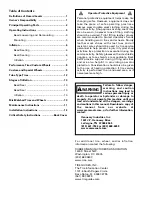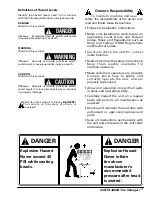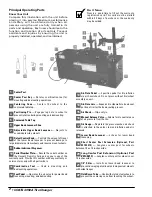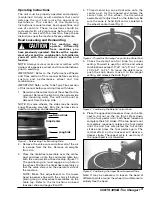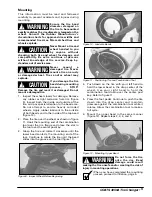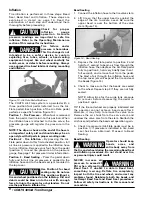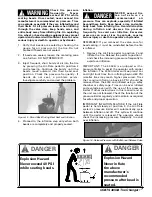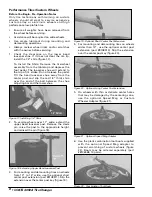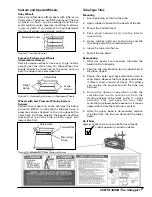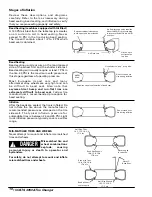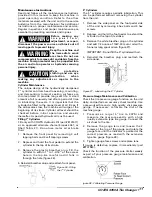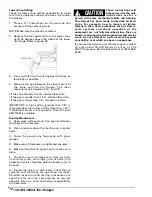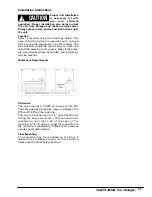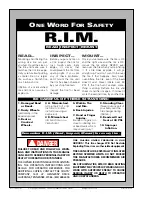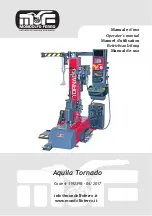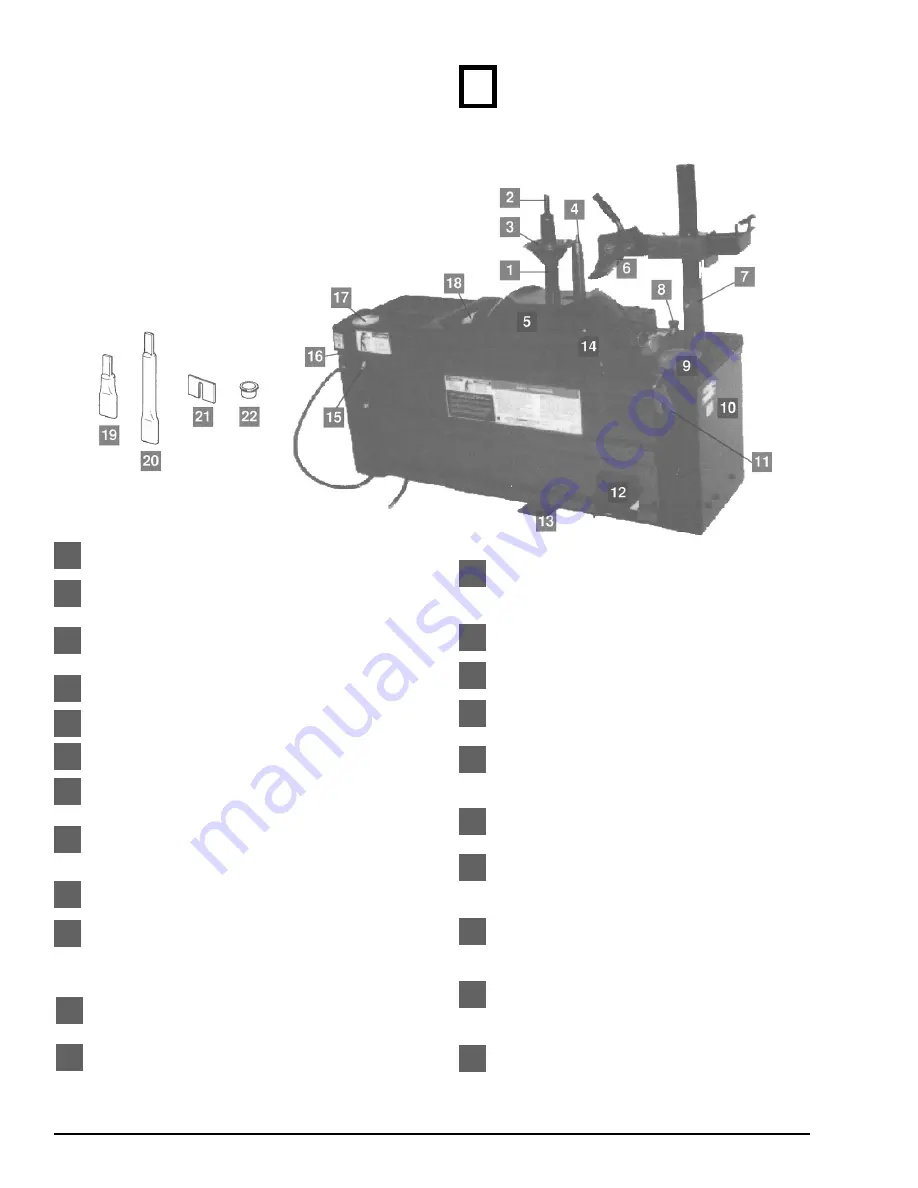
Principal Operating Parts
Know Your Unit
Compare this illustration with the unit before
placing it into service. Maximum performance
and safety will be obtained only when all
persons using the unit are fully trained in its
parts and operation. Each user should learn the
function and location of all controls. Prevent
accidents and injuries by ensuring the unit is
properly installed, operated, and maintained.
Center Post
Center Post Key —
Rotates combination tool for
mounting and demounting operations.
Centering Cone —
Centers the wheel to the
contoured table top.
Positioning Pin —
Engages lug hole in wheel to
prevent rotation during mounting and demounting.
Contoured Table Top
Upper Bead Loosener Shoe
Adjustable Upper Bead Loosener —
Adjusts to
accomodate wide wheels.
Detent Control Knob —
Controls the amount of travel
of the lower bead loosener to prevent damage to
large diameter narrow wheels and reverse mount wheels.
Rubber Lubricant Dispenser
Serial Number Plate —
Record the serial number on
the Owner’s Registry Card and on your copy of the
warranty card. Provide this number with any warranty or
service claim, and with all parts orders.
Combination Tool —
Used in mounting and
demounting operations.
Foot Pedal —
Operates the air valve for power bead
loosening, mounting, and demounting.
Do It Now
Now is a good time to fill out the warranty
registration card. This card must be mailed
within 30 days of purchase or the warranty
may be voided.
Air-Flate Pedal —
3 position pedal for tire inflation
via air hose/chuck. Do not press without tire/wheel
assembly on unit.
Air-Flate Jets —
Expands tire sidewalls to bead seat
portion of rim for the bead sealing process.
Air Chuck —
Clip-on style.
Manual Release Valve —
Allows for manual release
of air pressure from the tire.
Air Gauge —
Registers tire pressure when air chuck
is attached to the valve stem and inflation pedal is
released.
Lower Bead Loosener —
2 shoes for lower bead
loosening.
Short Center Post Extension (Optional, Part
#8108313) —
Lengtens center post for wheels
between 10 an 14 inches wide.
Long Center Post Extension (Optional, Part
#8108313)
—
Lengtens center post for wheels over
14 inches wide.
1/4” Shim —
Installs on lower bead loosener to
prevent damaging aluminum and magnesium wheels
with wide flanges.
Hold Down Tube —
Used with styled steel wheels to
prevent the centering cone from touching the wheel.
2 • COATS 4050A Tire Changer
1
2
8
7
6
5
4
3
✓
9
10
11
12
13
14
15
16
17
18
19
20
21
22


